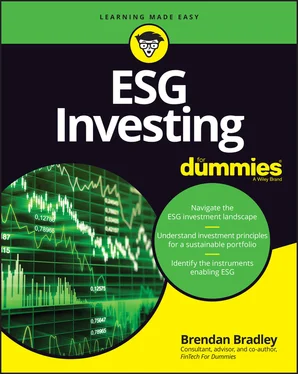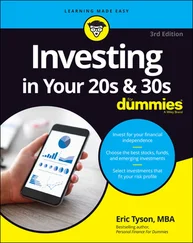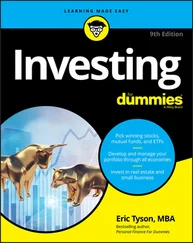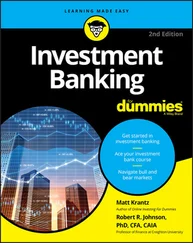1 ...7 8 9 11 12 13 ...21 Therefore, to tackle climate change and decarbonize the global economy, there’s a need to generate political action, social change, and financial support. The COVID-19 pandemic has shown that, faced with an imminent humanitarian crisis, a huge amount of political action can be implemented very quickly. Also, societies have changed their behaviors in a matter of weeks, and there’s been a great deal of financial backing to support these measures. The scale and pace of change for environmental concerns hasn’t been anywhere near comparable, but the pandemic may be a catalyst for further environmental action, with a greater emphasis on climate change after the crisis.
 It’s now the final decade to address the UN’s Sustainable Development Goals (SDGs), which set targets in 2015 for the world to become safer and more sustainable by 2030, based on the principle of “leaving no one behind.” To realize these impressive goals, policymakers and businesses must share the responsibility to mitigate and adapt to the risks of the climate emergency. This is further supported by the business case for environmental change as companies that manage sustainability risks and opportunities tend to have stronger cash flows, lower borrowing costs, and higher valuations over time. Visit
It’s now the final decade to address the UN’s Sustainable Development Goals (SDGs), which set targets in 2015 for the world to become safer and more sustainable by 2030, based on the principle of “leaving no one behind.” To realize these impressive goals, policymakers and businesses must share the responsibility to mitigate and adapt to the risks of the climate emergency. This is further supported by the business case for environmental change as companies that manage sustainability risks and opportunities tend to have stronger cash flows, lower borrowing costs, and higher valuations over time. Visit www.un.org/development/desa/disabilities/envision2030.html for details on the SDGs, and see Chapter 3for more about the environmental aspect of ESG investing.
On trend: Changing investor demographics
 In short, demographics are the characteristics of populations that change over time. This makeup includes age, gender, race, birth and death rates, education levels, income levels, and average family sizes. The world is constantly changing, and many of these shifts have the potential to shape how society is organized at a fundamental level. Demographic and social changes form the undercurrents for many economic, cultural, and business decisions and significantly influence how the world evolves.
In short, demographics are the characteristics of populations that change over time. This makeup includes age, gender, race, birth and death rates, education levels, income levels, and average family sizes. The world is constantly changing, and many of these shifts have the potential to shape how society is organized at a fundamental level. Demographic and social changes form the undercurrents for many economic, cultural, and business decisions and significantly influence how the world evolves.
The biggest shifts in demographics that the world faces today include the following:
Aging population: The global population is aging rapidly (and living longer) in more developed economies as fertility rates decline, while in developing countries the population continues to increase.
Baby boomers, millennials, and Generations Z and X: Millennials, those between the ages of 23 and 38, account for over a third of the global population and are starting to receive a multitrillion dollar wealth transfer from their parents, the baby boomers, as they pass on their inheritance to the next generations. Both this group and those slightly older, Generation X, who have deeper pockets, and those younger than them, Generation Z, with fewer funds but a keen interest in sustainable investing, will drive investment flows in the future.
Future workforce: As the population continues to age in developed economies, fewer people are available to sustain the working population. With a declining working population, modifying a workforce’s skill set may be key to keeping economies buoyant. As automation increases, workers must develop more advanced skills to stay competitive. The New Economy will have to ensure that automation supports a shrinking workforce, without limiting job and wage growth.
Immigration increase: Immigration has been further increasing since the beginning of the 21st century. Key migration factors range from political turmoil and conflict to the continuing quest for a better quality of life.
Consumer spending: In developed economies, an aging population is gradually shifting the purchasing power to older households. Global consumer spending from those over 60 years of age has nearly doubled from 2010 to 2020.
Education reform: By 2100, over 50 percent of the world will be living in India, China, or Africa. Future education and training must be based on skills relevant to the modern workforce and shifting global demographics in these regions.
Rapid urbanization: Population concentration in certain countries supports the case for rapid urbanization and is an overarching trend to consider, given that this principle originated in developed economies in the 20th century, with people transitioning from agricultural work to factory and service jobs.
 While the pace of development and the scope of consequences are difficult to quantify, demographic change is now taking center stage as one of the major global megatrends that have the greatest economic, social, and political impact. Strong social change movements are also influenced by demographic changes. As a result, these trends will offer unique challenges and opportunities for businesses, societies, and investors and will therefore influence investment flows.
While the pace of development and the scope of consequences are difficult to quantify, demographic change is now taking center stage as one of the major global megatrends that have the greatest economic, social, and political impact. Strong social change movements are also influenced by demographic changes. As a result, these trends will offer unique challenges and opportunities for businesses, societies, and investors and will therefore influence investment flows.
Crunch the numbers: Evolving data and analytics
The rapid growth in ESG investment strategies has been underpinned by the increasing availability of corporate sustainability metrics. Investors have embraced this information and integrated it into financial analyses and decisions. In addition, new technology, including artificial intelligence (AI) approaches, has allowed investors to run more enhanced analysis.
Investors are progressively applying non-financial factors as part of their analysis process to recognize material risks and growth opportunities. ESG metrics aren’t generally part of mandatory financial reporting, though companies are gradually including disclosures in their annual reports or in stand-alone sustainability reports. Also, institutions such as the Sustainable Accounting Standards Board (SASB) and the Global Reporting Initiative (GRI) are forming standards and defining materiality (a means of identifying which factors matter most for a specific company, from a wide and complex universe of sustainability indicators) to simplify incorporation of these factors into the investment process.
 While the quality of these metrics is improving, many still question the reliability, consistency, and utility of such data. Agreeing on the broad principles of ESG is one thing, but having a standardized view of how one company ranks relative to another is a key component in comparing performance of companies and portfolios as ESG investing develops. The most important concerns include filling in gaps in the data, adding new metrics, and improving dependability, which improves comparability across companies. I discuss rankings and metrics in more detail later in this chapter.
While the quality of these metrics is improving, many still question the reliability, consistency, and utility of such data. Agreeing on the broad principles of ESG is one thing, but having a standardized view of how one company ranks relative to another is a key component in comparing performance of companies and portfolios as ESG investing develops. The most important concerns include filling in gaps in the data, adding new metrics, and improving dependability, which improves comparability across companies. I discuss rankings and metrics in more detail later in this chapter.
The practice of reflecting ESG issues has evolved considerably from its origins in the negative or exclusionary screening of listed equities based on moral values. Some providers still focus on negative screening, where they exclude firms or sectors from investment portfolios, often on ethical or religious grounds (for example, tobacco, alcohol, ammunition, and gaming). Another common use case is limiting exposure to poor labor conditions, corruption, or other issues in the supply chain. A variety of methods are now being used that consider concerns for both purely investment-motivated and more values-motivated investors across asset classes. For example, ESG screens that identify what investors consider to be the worst-performing or “best in class” companies, in terms of their ESG score within a specific sector, are frequently applied. Yet providers don’t agree on which factors are most important, and much less data is available to help identify positive opportunities for sustainable investment. I discuss the ratings bias in more detail later in this chapter.
Читать дальше

 It’s now the final decade to address the UN’s Sustainable Development Goals (SDGs), which set targets in 2015 for the world to become safer and more sustainable by 2030, based on the principle of “leaving no one behind.” To realize these impressive goals, policymakers and businesses must share the responsibility to mitigate and adapt to the risks of the climate emergency. This is further supported by the business case for environmental change as companies that manage sustainability risks and opportunities tend to have stronger cash flows, lower borrowing costs, and higher valuations over time. Visit
It’s now the final decade to address the UN’s Sustainable Development Goals (SDGs), which set targets in 2015 for the world to become safer and more sustainable by 2030, based on the principle of “leaving no one behind.” To realize these impressive goals, policymakers and businesses must share the responsibility to mitigate and adapt to the risks of the climate emergency. This is further supported by the business case for environmental change as companies that manage sustainability risks and opportunities tend to have stronger cash flows, lower borrowing costs, and higher valuations over time. Visit  In short, demographics are the characteristics of populations that change over time. This makeup includes age, gender, race, birth and death rates, education levels, income levels, and average family sizes. The world is constantly changing, and many of these shifts have the potential to shape how society is organized at a fundamental level. Demographic and social changes form the undercurrents for many economic, cultural, and business decisions and significantly influence how the world evolves.
In short, demographics are the characteristics of populations that change over time. This makeup includes age, gender, race, birth and death rates, education levels, income levels, and average family sizes. The world is constantly changing, and many of these shifts have the potential to shape how society is organized at a fundamental level. Demographic and social changes form the undercurrents for many economic, cultural, and business decisions and significantly influence how the world evolves. While the quality of these metrics is improving, many still question the reliability, consistency, and utility of such data. Agreeing on the broad principles of ESG is one thing, but having a standardized view of how one company ranks relative to another is a key component in comparing performance of companies and portfolios as ESG investing develops. The most important concerns include filling in gaps in the data, adding new metrics, and improving dependability, which improves comparability across companies. I discuss rankings and metrics in more detail later in this chapter.
While the quality of these metrics is improving, many still question the reliability, consistency, and utility of such data. Agreeing on the broad principles of ESG is one thing, but having a standardized view of how one company ranks relative to another is a key component in comparing performance of companies and portfolios as ESG investing develops. The most important concerns include filling in gaps in the data, adding new metrics, and improving dependability, which improves comparability across companies. I discuss rankings and metrics in more detail later in this chapter.










